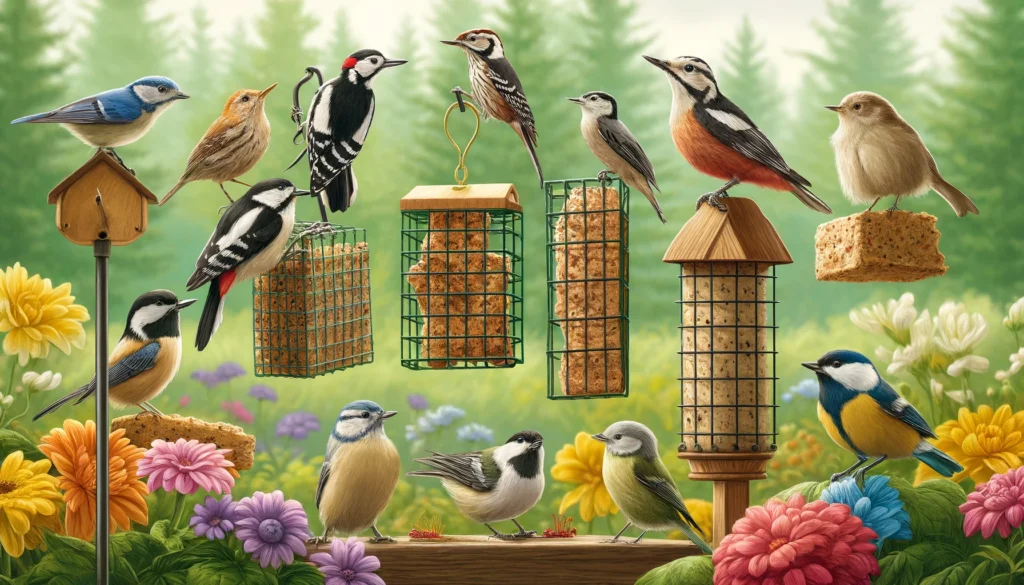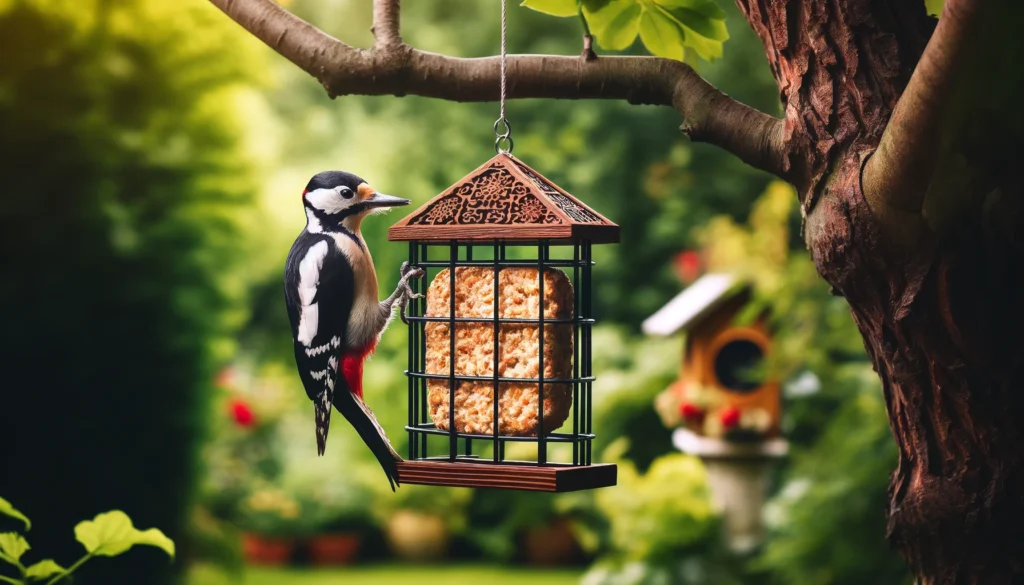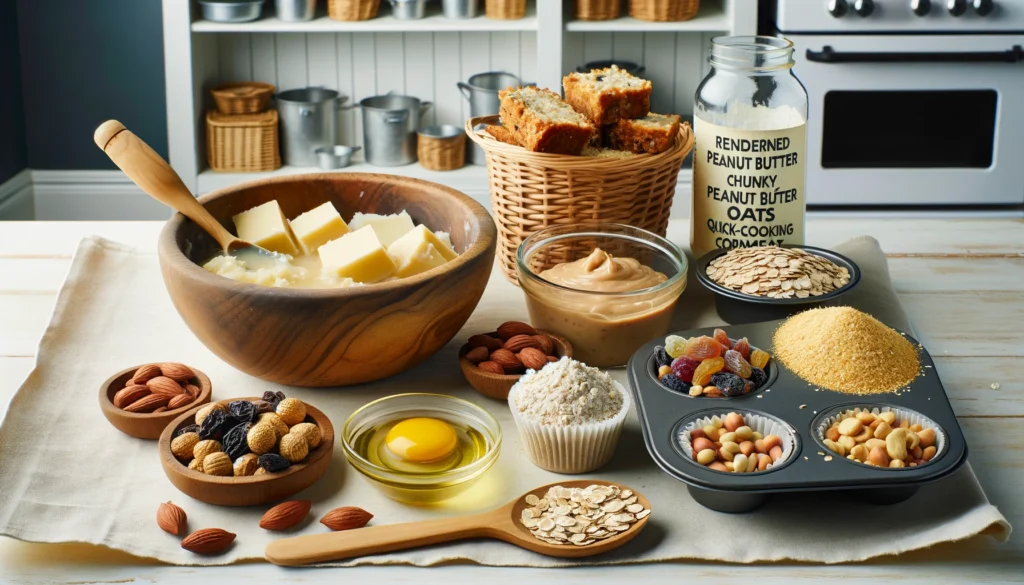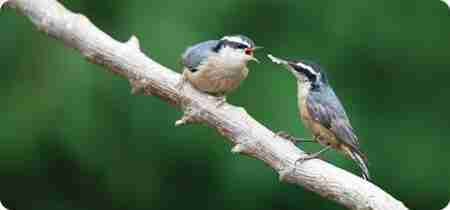Hey there, bird lover! Have you ever wondered why our feathered friends go absolutely nuts for suet? Well, you’re in for a treat because we’re diving into the delicious world of suet and why it’s such a hit at backyard feeders. Whether you’re a seasoned birdwatcher or just starting out, suet is the secret ingredient to attracting a vibrant variety of birds to your garden. So, grab a cup of coffee, get cozy, and let’s chat about all things suet – from the best feeders to making your own tasty suet cakes at home!
Making your own suet allows you to experiment with different ingredients to see what your local birds prefer. It’s a fun and rewarding way to support your feathered friends and enjoy the beauty of nature right in your backyard.

Choosing the Right Suet Feeder
Different Types of Suet Feeders
When it comes to suet feeders, there are several options to choose from. Each type has its own advantages and is designed to cater to different bird species and feeding habits.
- Caged Suet Feeders: These feeders consist of a wire cage that holds the suet cake. They are great for clinging birds like woodpeckers and nuthatches.
- Tail Prop Suet Feeders: Designed specifically for woodpeckers, these feeders have a tail prop area that allows woodpeckers to balance themselves while feeding.
- Log Suet Feeders: These feeders are made from a section of a log with holes drilled into it to hold suet plugs. They mimic natural feeding environments and attract woodpeckers and other clinging birds.
- Mesh Suet Bags: These are simple mesh bags that hold suet cakes or suet balls. They are easy to use and can be hung anywhere in the garden.
- Recycled Plastic Suet Feeders: Made from recycled materials, these feeders are environmentally friendly and durable, offering a sustainable feeding option.
How to Select the Best Feeder for Your Garden
Selecting the right suet feeder depends on several factors:
- Bird Species: Consider the types of birds you want to attract. For example, woodpeckers prefer tail prop feeders, while smaller birds like chickadees and nuthatches are comfortable with caged feeders.
- Feeder Location: Choose a feeder that suits the available space in your garden. Log feeders blend well with natural surroundings, while caged feeders can be hung from trees or poles.
- Ease of Maintenance: Opt for feeders that are easy to clean and refill. Mesh bags and simple cages are generally low maintenance.
- Pest Resistance: If squirrels and other pests are a problem, look for feeders designed to deter them, such as caged feeders with small openings.
Tips for Placement and Maintenance
- Location: Hang suet feeders in a quiet, sheltered area of your garden to make birds feel safe. Avoid placing them near busy walkways or loud noises.
- Height: Position feeders at different heights to attract a variety of bird species. Some birds prefer feeding higher up, while others are comfortable closer to the ground.
- Maintenance: Regularly clean your suet feeders to prevent mold and disease. Use a mild soap and water solution, and rinse thoroughly before refilling.
- Seasonal Adjustments: Move feeders to shaded areas during summer to prevent suet from melting and spoiling.

Common Birds That Eat Suet
List of Common Suet-Eating Birds
Suet is a favorite among many bird species. Here are some of the most common suet-eating birds and tips on how to identify them:
Woodpeckers
- Appearance: Woodpeckers have strong, chisel-like beaks and distinctive black, white, and red markings.
- Behavior: Known for their pecking behavior on trees, they use their tails to prop themselves while feeding on suet.
- Common Species: Downy Woodpecker, Hairy Woodpecker, Red-bellied Woodpecker
Nuthatches
- Appearance: Small birds with short tails, long bills, and a distinctive habit of climbing down trees headfirst.
- Behavior: Agile climbers, often seen foraging on tree trunks and branches.
- Common Species: White-breasted Nuthatch, Red-breasted Nuthatch
Chickadees
- Appearance: Small, round birds with black caps and bibs, white cheeks, and gray wings.
- Behavior: Energetic and curious, often found flitting around feeders and taking food back to their nests.
- Common Species: Black-capped Chickadee, Carolina Chickadee
Titmice
- Appearance: Similar in size to chickadees, with a tufted crest on their heads, gray bodies, and white underparts.
- Behavior: Active and sociable, frequently visiting feeders in small groups.
- Common Species: Tufted Titmouse, Oak Titmouse
Wrens
- Appearance: Small, brown birds with short tails often held upright, and intricate, bold patterns.
- Behavior: Inquisitive and vocal, wrens are known for their loud, complex songs.
- Common Species: Carolina Wren, House Wren
Seasonal Considerations for Feeding Suet
Best Time of Year to Offer Suet
Suet can be offered year-round, but it is especially beneficial during colder months when birds need extra energy to stay warm. Fall and winter are the best times to provide suet, as birds rely on high-fat foods to maintain their body heat.
Adjusting Suet Offerings Based on Seasons
- Winter: Provide suet consistently to support birds through cold weather. Use high-fat, energy-rich mixes with seeds and nuts.
- Spring: As temperatures warm, continue offering suet, but consider using no-melt varieties to prevent spoilage.
- Summer: Offer suet in shaded areas to keep it cool. Opt for no-melt or heat-resistant suet cakes.
- Fall: Increase suet offerings to help birds build up fat reserves for migration and winter.
Troubleshooting Common Suet Problems
Dealing with Melting Suet in Summer
- Use No-Melt Suet: No-melt suet varieties are designed to withstand higher temperatures without becoming soft or runny.
- Placement: Hang suet feeders in shaded areas to keep them cool. Avoid direct sunlight, which can accelerate melting.
- Smaller Portions: Offer smaller portions of suet and replace them more frequently to ensure freshness.
Preventing Squirrels and Other Pests from Eating Suet
- Squirrel-Proof Feeders: Invest in feeders specifically designed to deter squirrels, such as those with cages or weight-activated mechanisms.
- Placement: Hang feeders away from trees, fences, or other structures that squirrels can use to reach them. Use baffles to block access.
- Capsaicin Suet: Some suet cakes contain capsaicin (hot pepper) to repel mammals while being safe for birds.
Keeping Suet Fresh and Mold-Free
- Clean Regularly: Clean suet feeders at least once a week, or more often in hot, humid weather.
- Store Properly: Store suet cakes in a cool, dry place to prevent spoilage before use.
- Monitor: Check suet frequently for signs of mold or spoilage and replace as needed.

Encouraging Birds to Eat Suet
Tips for Attracting Birds to Suet Feeders
- Variety: Offer different types of suet to appeal to a wide range of bird species.
- Freshness: Keep suet fresh and replace it regularly to attract more birds.
- Feeder Placement: Place feeders in safe, quiet areas where birds feel secure from predators.
Creating a Bird-Friendly Environment in Your Garden
- Native Plants: Plant native trees, shrubs, and flowers to provide natural food sources and shelter for birds.
- Water Sources: Provide fresh water for drinking and bathing. Birdbaths, fountains, or small ponds can attract more birds.
- Avoid Pesticides: Minimize or eliminate the use of pesticides to create a safe environment for birds and their food sources.
Related Products…





Conclusion
Feeding suet to birds is a wonderful way to support your local bird population and enjoy the beauty of nature in your garden. By choosing the right suet feeder, offering a variety of suet types, and maintaining your feeders properly, you can attract a diverse array of birds year-round. Remember to adjust your suet offerings based on the seasons and troubleshoot any common issues to keep your feathered friends healthy and happy.
We hope this guide inspires you to start feeding birds suet and to share your experiences with fellow bird enthusiasts. Happy birdwatching!




